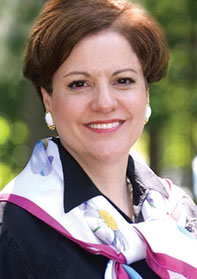
What Diversity and
Inclusion Means for Latinos
Diversity and Inclusion, or D&I, has become a big deal in organizations of all kinds. Big corporations, foundations and government agencies have appointed more Chief Diversity Officers or heads of D&I than ever before. Why? And what does it mean for Latinos?
It’s a big deal because organizations have seen the data and recognize increasingly that D&I is not just a nice thing to do, not just the right thing to do, but an imperative for boosting the bottom line or achieving organizational goals. Last year, the respected consulting firm, McKenzie, reported the results of a study, showing that gender diverse companies are 15 % more likely to outperform others; Ethnically diverse companies are 35% more likely “to have financial returns above their national industry medians;” and Diverse organizations are more attractive destinations for top talent.
to do, not just the right thing to do, but an imperative for boosting the bottom line or achieving organizational goals. Last year, the respected consulting firm, McKenzie, reported the results of a study, showing that gender diverse companies are 15 % more likely to outperform others; Ethnically diverse companies are 35% more likely “to have financial returns above their national industry medians;” and Diverse organizations are more attractive destinations for top talent.
In February, 2017, Fortune reported on the first ever Diversity and Inclusion index that was developed and announced by Thomson Reuters in 2016. The company analyzed more than 5,000 companies, but narrowed its focus to the top 100. Those companies, the article said, “have been building on the growing body of research that shows that diverse companies create more innovative products, happier customers, and better financial returns.”
In 2016, Third Sector New England (TSNE) published a “Step-by-Step” guide to achieving D&I goals, saying that diverse and inclusive environments have many benefits, such as Enhanced creativity,Better and more productive communications,Faster problem-solving, and Enhanced programs and services to constituents.
The case is clear. D&I is an inescapable imperative. So, the second question is: What does it mean for Latinos?
In my view, it means opportunity. At more than 58 million and about 18 percent of the population, Latinos are shaping many dimensions of our society – government, fashion, the arts, entertainment, cuisine, language – and the economy. As Marcela Berland of research firm LatinInsights likes to say, “What part of the $1.5 trillion in purchasing power don’t you want to tap?” That’s right. Latino purchasing power exceeds the GDP of Mexico. And it will be $1.7 trillion by 2020. If Latinos were a country, they would rank 20th worldwide in economic output.
For many years, Latinos were the fastest growing cohort of our population. Today, however, it is Asian. Still, the size and economic power of the Latino population place it in the forefront of D&I considerations of organizations of all kinds.
“Although we are 18 percent of the U.S. population, our representation in the C-suite and boardroom in Corporate America is not proportional to our population and economic contributions,” said Cid Wilson, President, Hispanic Association for Corporate Responsibility (HACR). “By increasing our numbers in these roles, we can provide critical business insights that factor in the uniqueness of our multicultural background and that can give companies a competitive advantage compared to others that lack executive-level multicultural insight.”
And a new key organization, the Latino Association of Corporate Directors, was founded to give voice to and leverage the influence of Latinos on corporate boards and to grow their numbers. Its president, Esther Aguilera, minces no words: “It’s about the business case. Latino consumers are driving consumption growth for all mass consumer categories. When a corporate board comes to decision making from perspectives that reflect the diverse marketplace, they get better decisions, and better decisions yield better company performance and results for shareholders.”
The American Association of University Women noted last year that women are one-twentieth of Fortune 500 CEOs, less than a quarter of college presidents and a tenth of governors. The AAUW’s report, Barriers and Bias: The Status of Women in Leadership, presents recommendations on how to contribute to an environment in which gender is not a barrier to leadership. Women, it says, have led throughout history, and today the tradition of volunteer female leadership continues to flourish. Yet in paid leadership, women’s rise to top positions confronts the glass ceiling and is relatively rare. See www.aauw.org.
Mariela Dabbah, the Argentina-born founder of the Red Shoe Movement that encourages women and men to help women, organizes conferences and workshops to encourage women to identify and develop their strengths for greater success in whatever organization they find themselves (www.redshoe.com).
So, how to achieve D&I goals. What are the next steps? That is the key question. How do we harness our numbers, our influence, our capabilities and our education? Here are some thoughts:Seize opportunities for educational advancement.Support organizations that support D&I. Don’t fear tests. They are your friends. Join organizations that align with your interests. Optimize your résumé. Volunteer, since most hiring managers value volunteerism. Build valuable relationships, and use your time productively (e.g., subscribe to www.TheMuse.org)
Having been in the corporate and nonprofit HR arenas for many years, I have learned many lessons. In my own work I have D&I goals and strategies to achieve them. I am committed not only to achieving them but to helping others achieve their goals along the way. !Buena suerte!
Yvette Donado is the multi-award-winning Chief Administrative Officer and Chief Diversity Officer of Educational Testing Service in Princeton, NJ. Each year, ETS develops and administers more than 50 million tests in 180 countries (www.ets.org).